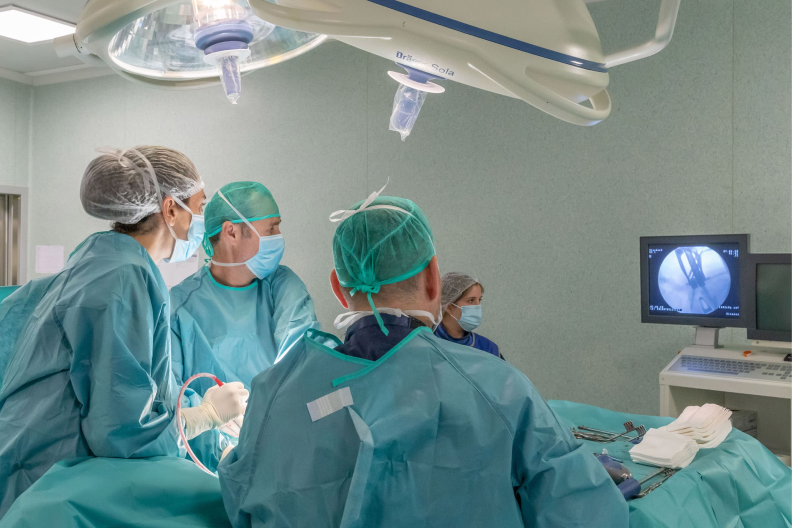Microvascular decompression is a surgical procedure that involves the release and decompression of the trigeminal nerve or other cranial nerves originating in the brain stem.
Acabar con el dolor es posible y nuestro equipo quiere ayudarle a conseguirlo. Dé el primer paso contactando con nosotros.
Madrid: +34 919 148 441
Barcelona: +34 936 090 777
Llevamos la excelencia neuroquirúrgica a Sevilla, ofreciendo servicios especializados en neurocirugía de columna y cráneo.
¡Llama al +34 955 277 751 o +34 633 143 686 para más información!
Microvascular decompression is a surgical procedure that involves the release and decompression of the trigeminal nerve or other cranial nerves originating in the brain stem.

It is used mostly to treat trigeminal neuralgia when the pain has not responded to pharmacological treatment.
Trigeminal neuralgia is a chronic pathology, which consists of intense and episodic pain in the face, because it affects one of the trigeminal branches: ophthalmic, maxillary or mandibular.
It affects more women than men, and more often after the age of 50. The pain occurs suddenly and episodically, and is usually triggered by tactile stimuli on the surface of the face or other activities such as chewing, talking, yawning or brushing your teeth.
With magnetic resonance imaging of the brain, we see that the main cause of this pathology is neurovascular compression. The most frequent culprit is the superior cerebellar artery (90%), followed by the anteroinferior cerebellar artery (10%), which cause mechanical irritation on the nerve. However, there are other causes for this pathology that do not improve with surgical decompression: chemical irritation, HIV, multiple sclerosis, herpes zoster infection, among others.

Microvascular decompression is performed under general anesthesia, with neurophysiological monitoring and using a neurosurgical microscope.
The first step is to make a curved, C-shaped incision about 2 cm from the pinna, using the tip of the mastoid process as a reference. After lifting the skin and deperiostizing, a small craniectomy (about 2-3cm in diameter) is performed just at the lower margin of the transverse sinus and behind the sigmoid sinus, revealing the dura, and when opened, the cerebellum.
The cerebellum is gently moved aside to reveal the brain stem in depth. At this point the arachnoid membrane that surrounds the cranial nerves must be dissected, until reaching the trigeminal, the 5th pair. At this point, a small amount of spongy material (such as Teflon) is inserted at the vascular junction between the compressing vessel and the nerve, and the wound is closed.
Although microvascular decompression is a complex surgery, in the absence of any complications, the hospital stay is usually only 2 to 3 days. Physical rehabilitation is not required, but medication for neuralgia is usually continued for the first few weeks following surgery. This medication is then gradually withdrawn under medical supervision in the follow-up visits.
Because of the deep internal location of the trigeminal nerve, there are various risks associated with the procedure:
However, at Instituto Clavel we have extensive experience in this type of procedure and we use the latest technology, which allows us to perform it safely and minimize the possible complications.
Contact us so that we can give you a personalized assessment.